After leaving the Caprivi Strip, we headed for one of the highlights of our camping safari: Botswana’s Chobe National Park, a park that boasts one of the largest concentrations of game in Africa and more than fifty thousand elephants.
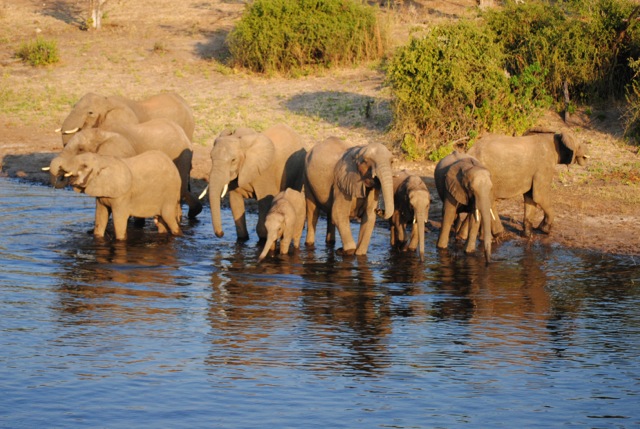
After leaving the Caprivi Strip, we headed for one of the highlights of our camping safari: Botswana’s Chobe National Park, a park that boasts one of the largest concentrations of game in Africa and more than fifty thousand elephants.

After leaving the Okavango Delta, we drove back into Namibia. On paper, the route sounds confusing: Namibia to Botswana, then back to Namibia before driving into Botswana again? Rest assured that we weren’t actually backtracking; instead, we were transiting through and spending the night in the Caprivi Strip – Namibia’s 450km-long panhandle, which juts out over Botswana and underneath Angola and Zambia.1
The border post where we exited Botswana deposited us directly into Namibia’s Bwabwata National Park, where we were treated to an informal game drive as we drove north towards the Caprivi Strip’s main east/west highway. Although we didn’t seek out watering holes or anywhere that animals might congregate, we still had incredible luck with our sightings. We saw everything from the more common animals (impala, kudu, warthogs) to some of the iconic African animals (elephants, buffaloes, giraffes, zebras, hippos, wildebeests) to varieties of antelope we hadn’t yet spotted (roan antelopes and red lechwes). One of the more memorable sightings was an enormous troop of baboons with many small baboons romping around.
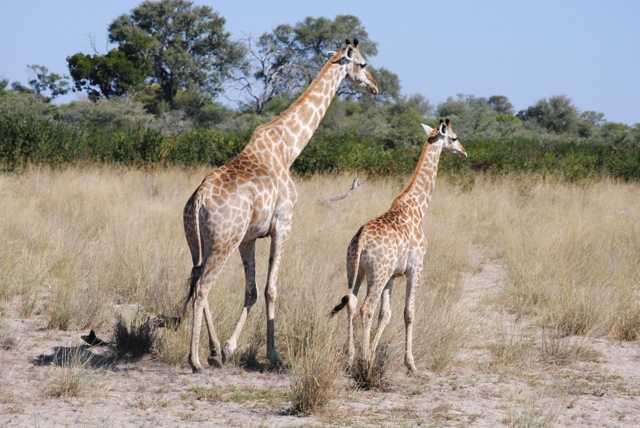
Continue reading Camping at Own Risk: Transiting Through the Caprivi Strip
After our morning walk with the San people, we got an early start on both the day and our drive across Western Botswana, from the Kalahari Desert up to the Okavango Delta. Along the way, we passed a number of tiny villages and countless heads of cattle roaming across the road. Eventually we reached the town of Etsha 13,1 where we would be leaving behind our bus and transferring into a giant 4WD vehicle with massive tires for the remainder of the journey into the delta.
After unpacking nearly everything from the bus – including everyone’s packs, the tents, and multiple coolers full of food and drinks – and loading it onto the 4WD vehicle, we were on our way. Our destination was Guma Lagoon Camp, a lodge along the banks of Guma Lagoon in the panhandle of the Okavango Delta, where we would be camping for the next two nights. Within minutes, it became readily apparent as to why we needed the 4WD vehicle to complete this last portion of the journey: the route quickly changed from driving along a sandy track to sloshing through water that was several feet deep.2 Along the way, we saw a number of birds, including the instantly recognizable hammerkop and several African fish eagles.3
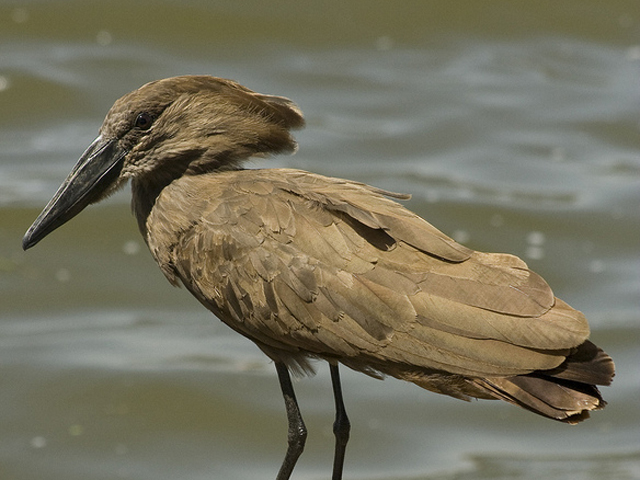
From the early days of our planning for this adventure across Southern Africa, we had intended to first travel through Mozambique, Swaziland, Lesotho, and South Africa, before going north to explore Namibia, and then heading east, through Botswana, on our way to Victoria Falls. One of the hurdles in this aspirational routing, however, was the lack of public transportation between Windhoek (where we would be wrapping up our two weeks of travels through Namibia) and Maun (the principal jumping-off point for travels in the Okavango Delta, and one of the only towns of any size in Northern Botswana). After considering a couple of expensive/unappealing options for independent overland travel – renting a car to make the one-way journey or hitchhiking through a sparsely populated stretch of the Kalahari Desert – we decided to go all in with Wild Dog Safaris and tack a nine-day, one way trip from Windhoek, through Botswana and Namibia’s Caprivi Strip, to Victoria Falls onto the end of our Namibian travels.1 Continue reading Traveling from Namibia to Botswana (Or, Walking with the San People)
As we complete our travels in Southern Africa and cross the border into Tanzania today, here, in no particular order, are 10 things that we have resolved to never again take for granted:
1. Indoor heating in wintertime.
2. Feeling under the weather without a fear of having contracted malaria.1
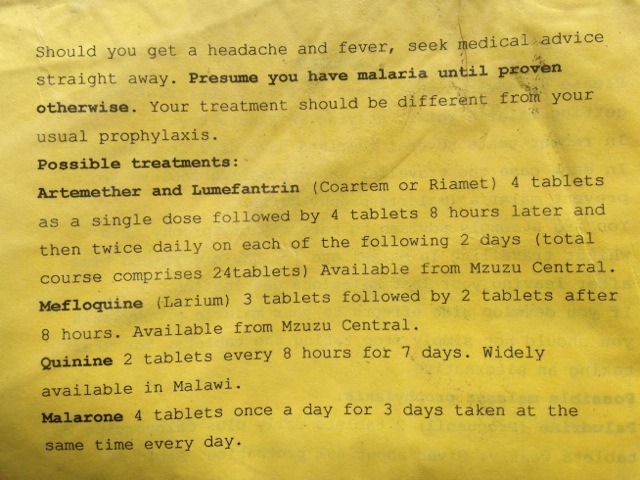
3. A constant supply of electricity and running water.
4. Reliable high-speed internet access.2
5. Having more than five clothing options in your wardrobe backpack.
6. En suite bathrooms in hotel rooms. See also hot showers.
7. ATMs that unquestionably accept your debit card and are stocked with cash.
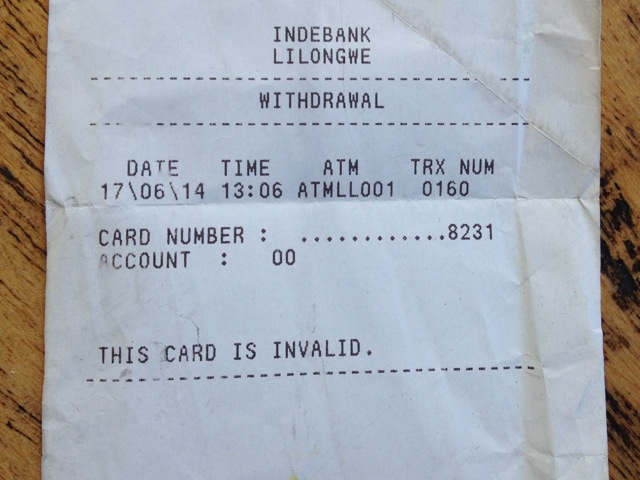
8. The assurance of livestock-free public transportation.3
9. Used bookstores that are not dominated by Danielle Steele novels or books in Afrikaans.
10. The ready availability of things like Thai food and non-instant coffee.
1 Spoiler alert: the malaria test I had done on Monday came back negative.
2 No, really. Even this simple, two-picture post took forever to upload.
3 Remind us never to complain about the MTA ever again.
After we decamped from the Worst Campsite in the World, we set off for the Skeleton Coast, a famously treacherous portion of Namibia’s Atlantic coastline. The area is so named for the ships and their crew that met their fates there. The drive to the coast from Damaraland was impressive, as we passed near the largest mountains in Namibia before transiting through a parched, barren stretch of the Namib Desert. As we drove towards the coast, we watched for an hour as a bank of coastal fog grew from a faint, distant line across the horizon to a sea of gray which eventually enveloped our vehicle.

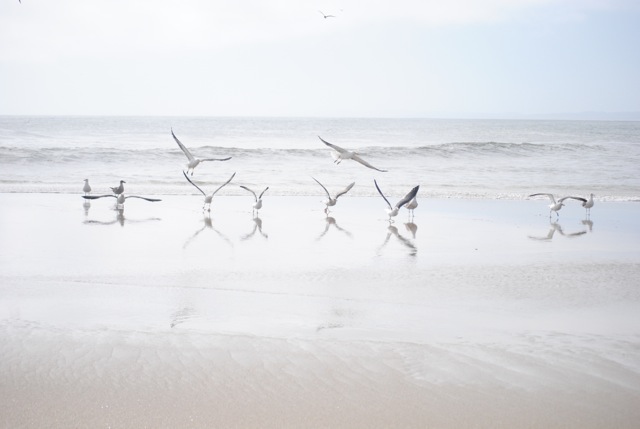
The scenery on our drive through Damaraland and over Grootberg Pass from Hoada Campsite to our next campsite was stunning, and we stopped several times along the way to marvel at it (and, once, at a scorpion that was crossing the road).
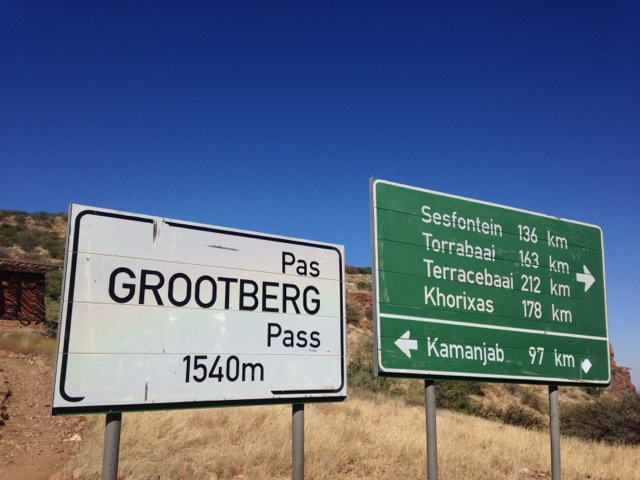
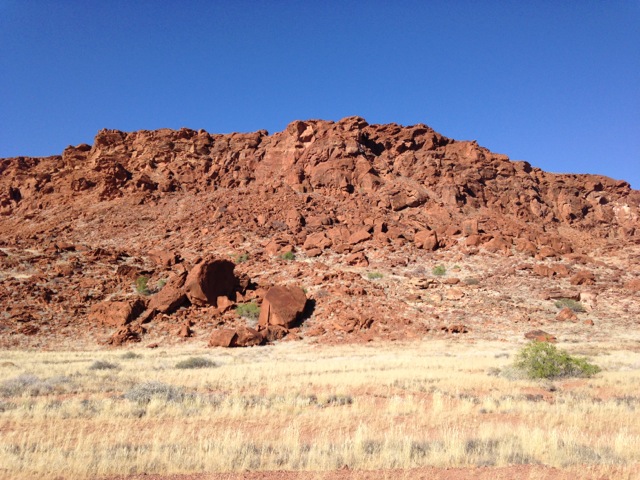
Continue reading Twyfelfontein Rock Engravings, Burnt Mountain, & the Organ Pipes
With their red-tinged skin and elaborate braids, Himba women are among the most recognizable in Namibia. Their distinctive appearance has piqued the curiosity of many travelers, and our tour of Northern Namibia included a visit to a Himba village so that we could learn about their culture.
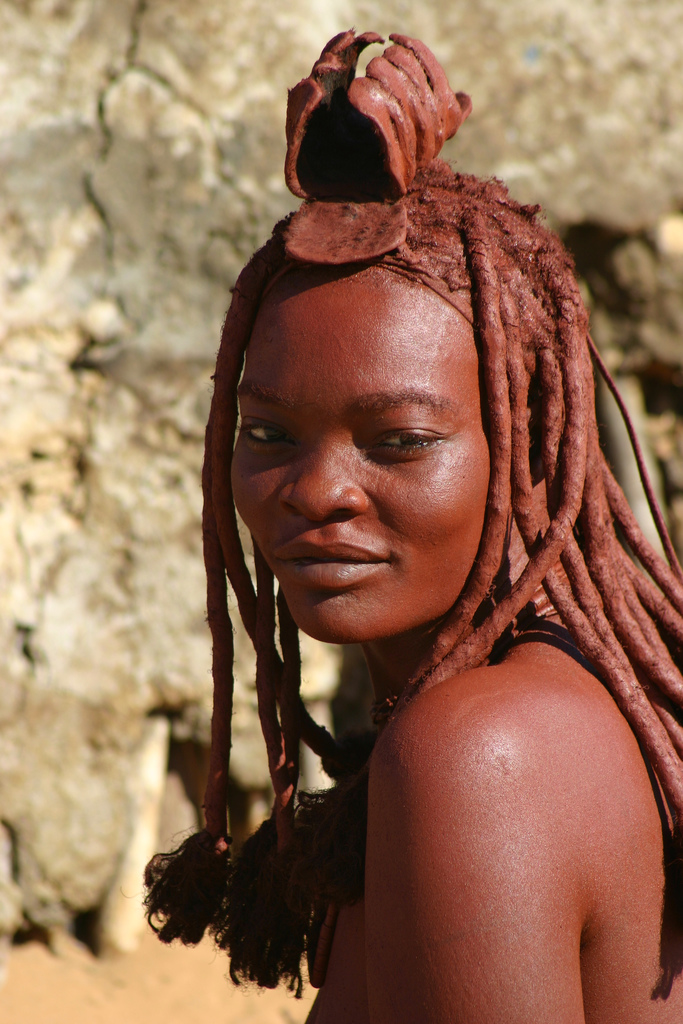
Our visit with Wahu and his friends primed us for the next stop on our tour of Northern Namibia, and we were excited to see the animals that roamed Etosha National Park. Our itinerary gave us two days and nights in Etosha: we would arrive around noon on the first day and set up camp at Namutoni Camp before setting out an afternoon game drive, and our second day would begin with a morning game drive, a brief respite for lunch at Halali Camp, and then a drive to Okaukuejo Camp, where we could visit the watering hole around which the camp was set after dark. Our guides suggested that, if we were lucky, we might see a black rhino during the evening at the floodlit Okaukuejo watering hole.
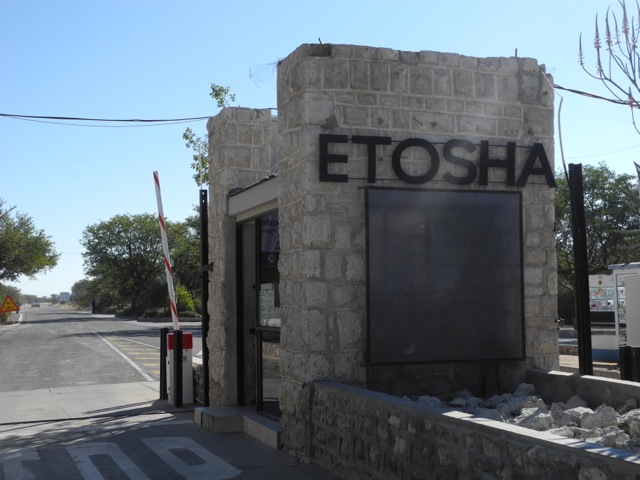
Continue reading Etosha National Park: Lions and Elephants and Rhinos, Oh My!
As with the first day of our weeklong tour through Southern Namibia, our seven-day circuit through Northern Namibia began with an early start from the Wild Dog Safaris office in Windhoek. While our Southern Namibian travel group had been fairly small, with just five other people, the group for our northern trek included eleven additional travelers.1 After meeting up with our new guides, we were quickly on our way out of town, heading north from Windhoek on the B1 – Namibia’s main highway linking its southern border with South Africa to its northern border to Angola. Continue reading Hanging out with the AfriCats